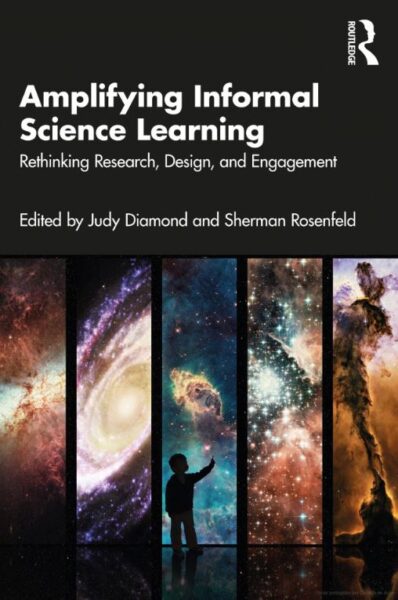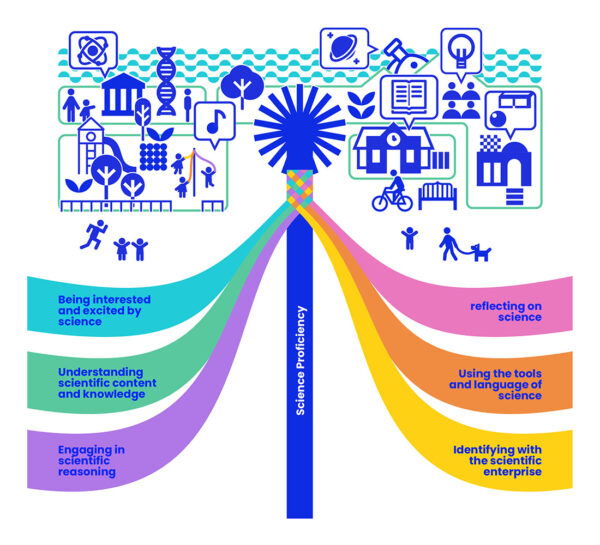Informal Science Learning (ISL) continues to captivate and inspire curious minds, offering a gateway to a world of discovery beyond traditional educational settings. In order to further delve into the profound themes surrounding ISL, the Surrounded by Science (SbS) project spoke with Sherman Rosenfeld, one of the editors of the book “Amplifying Informal Science Learning: Rethinking Research, Design, and Engagement”, and a Consortium member, to learn more about his opinions on this topic. Our conversation explored the invaluable insights his book offers, particularly in relation to its relevance and impact on the SbS project.

The book comprises 34 chapters written by many different experts from multiple countries and touches on a wide variety of topics and themes. In fact, the essays masterfully united by the editors range from inclusivity to digital engagement, from places and spaces of learning to bridge formal and informal learning, while always following the fil rouge of describing Informal Science Learning state-of-the-art and its future implications. This work is definitely a must-read for anyone interested in STEM education.
Despite every chapter being structured differently, most of them are based on the explanation of specific case studies and the impact that the informal STEM (iSTEM) activities provided on the research subjects. Those essays provide concrete examples of how ISL contributes to enhancing learning outcomes for people across various contexts or age groups. From explaining climate change effects to people from Pennsylvania rural areas (Chapter 15) to informing the general public about AIDS with a travelling exhibition in the 1990s (Chapter 2), the informal context supports individuals in their pursuit of knowledge. It lights the fire of curiosity through its interdisciplinary nature, fostering extended communities and involving real-world problems. This dynamism motivates challenging questions, fueling inquiry beyond clear and simple answers.
It is precisely this ability to move feelings that makes ISL and its formal counterpart complementary. For example, people in formal contexts learn about science, but with citizen science programmes, they feel like scientists (Chapters 13 and 14). Moreover, when kids study animals in class, they learn about how beasts behave and their anatomy, but only in zoos and aquaria do they develop empathy for them (Chapter 11). iSTEM activities can also change students’ perception of their teachers, who are better considered when they apply gamification to learning, as described in the case of the Chemical Escape Room (Chapter 18).
So, the SbS project will start with the groundwork already covered in the literature and elaborate on the ideas further using its innovative methodology. The examples cited above can help us understand what bridging the gap between formal and informal STEM education really means and how iSTEM activities improve the Science Proficiency of participants in each of its strands. This doesn’t happen only for kids of their school age; ISL is a good companion for each individual’s lifelong learning journey, improving accessibility to science knowledge, even taking it to people who cannot afford to visit museums and other science dissemination institutions (Chapters 1, 15, 16 and 20).
Moving forward, the SbS project will continue to leverage its distinctive concepts and tools in order to further improve the quality and accessibility of ISL activities, with the aid of the Science Chaser App. With that in mind, the project also aims to take the research beyond the simple visit to the institution or the activity provided. It will explore how informal learning can enhance engagement with science in everyday life, thereby adding greater value to ISL initiatives.

